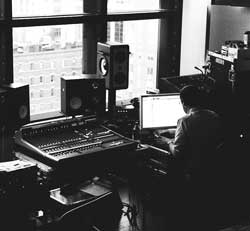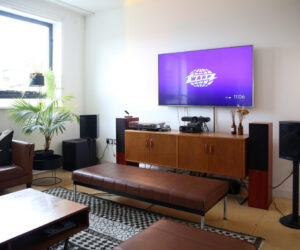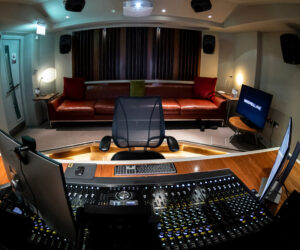Producer Ben Hillier recently specified Solid State Logic’s Matrix SuperAnalogue mixing console with software controlled analogue patch system and multi-layer DAW control to anchor tracking on Depeche Mode’s eagerly-awaited thirteenth studio album, Delta Machine.
The SSL Matrix has become a central hub of the Depeche Mode production process with frontman Dave Gahan, having set up a Matrix-based project studio at his New York City home, while Ivor Novello Award-winning principal songwriter, synthesist, and guitarist Martin Gore has added a Matrix to his home-based project studio in sunny Santa Barbara.
Having helmed the Depeche Mode production process so successfully for 2005’s Playing The Angel album and its Grammy-nominated Sounds Of The Universe follow-up in 2009, producer and Matrix owner Ben Hillier returned to the Depeche Mode production fold for Delta Machine.
The Matrix proved an invaluable element of the unusual Depeche Mode creative process as the central hub for a huge collection of analogue hardware and multi-DAW based workflow.
“At the end of ‘Sounds Of The Universe’ we’d encouraged Martin to shift his work method away from purely using soft synths,” says Hillier. “We really enjoyed using vintage analogue synths on that record.
“Martin didn’t have a massive collection to start with, but he collected a whole load more. As a result of that, he knew he needed to rebuild his home studio, so we set him up with an SSL Matrix.”
Fast forward to the genesis of Delta Machine and Gore was at it again, having assembled a monstrous modular synth system with well over 700 Eurorack modules.
According to Hillier, “One of the first things that [A&R] Daniel Miller said to me was, ‘The demos that Martin’s made this time are amazing!’ And he was right. They had this great sound to them — because he was using all these old synths and mixing them through the Matrix.”
Transforming those promising-sounding demos into a fully-fledged Depeche Mode album meant moving band, producer, and programming team into a self-built multi-DAW studio setup within the live room at Santa Barbara Sound Design.
“That studio has a great big live room, so we built a studio in there, because putting a band in a live room and me in a control room is not relevant to the way Depeche work.
“We had a Pro Tools rig with hardly any plug-ins as the main recording hub for our studio, which we sort of used like a multitrack, with a summing bus as a mix output, plus a load of laptop-based areas.
“We didn’t want to have everyone sitting around looking over other people’s shoulders at one computer screen while someone moved bass drums around, so it was a way of making programmed music in a slightly more sociable, slightly less navel-gazing way.
“We’d worked in a similar way on Sounds Of The Universe, but really missed having a mixing console, because it was quite difficult to reprocess stuff and doing things on the fly was harder, so that’s the reason why we got the Matrix.”




















